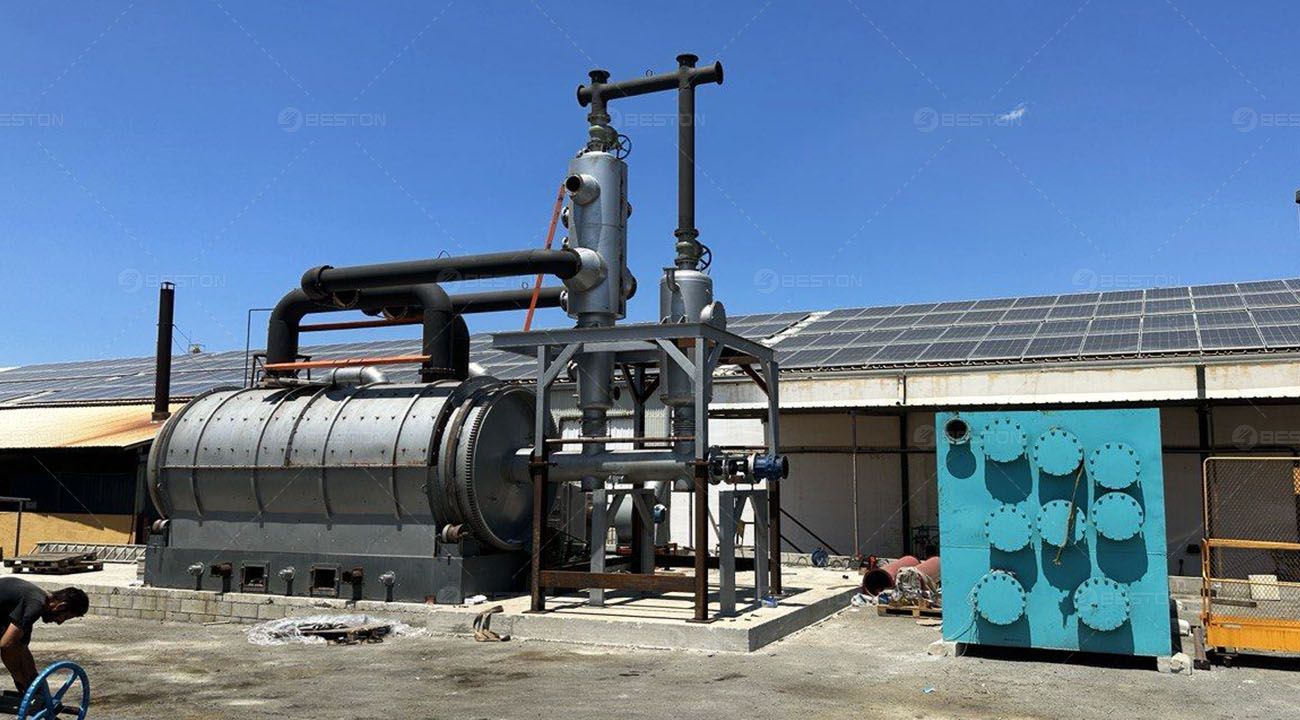Feasibility Analysis of Plastic Pyrolysis Plant
- By Beston Charcoal
- •
- 22 May, 2024
- •
The ever-growing plastic waste crisis has spurred the exploration of innovative solutions. Plastic pyrolysis plants, which thermochemically decompose plastic into usable products, present a promising approach. However, embarking on such a project necessitates a comprehensive feasibility analysis to assess its technical, economic, and environmental viability.
Technical Feasibility
Feedstock Availability and Pre-Treatment: A critical factor is the accessibility and consistency of plastic waste feedstock. Ideally, the plant should target readily available plastic types (e.g., HDPE, PET) with minimal contamination. Pre-treatment processes, such as sorting, shredding, and washing, are crucial to ensure feedstock homogeneity and reactor efficiency.
Pyrolysis Technology Selection: Pyrolysis reactors come in various configurations (fluidized bed, rotary kiln) and operating temperatures. The selection hinges on the desired product yield (fuel oil, syngas, char) and the type of plastic waste processed. Each technology has its advantages and disadvantages in terms of energy consumption, product quality, and operational complexity.
Product Upgradation and Post-Processing: The pyrolysis outputs – fuel oil, syngas, and char – may require further refinement to meet specific market demands. Fuel oil quality can be improved through hydrotreatment to remove impurities. Syngas may necessitate additional cleaning for use in engines or conversion into valuable chemicals. Char utilization strategies, such as gasification or densification into solid fuels, require careful consideration.
Economic Feasibility
Capital Expenditure: Establishing a plastic pyrolysis plant necessitates significant upfront costs encompassing land acquisition, reactor procurement, auxiliary equipment (e.g., material handling systems, pollution control units), and construction expenses. A detailed cost breakdown is essential for project budgeting and financial planning.
Operational Expenses: The ongoing operational costs include feedstock procurement, utilities (electricity, water), labor, maintenance, and waste disposal. Optimizing these expenses is crucial for project profitability.
Revenue Streams: The economic viability hinges on the ability to generate revenue from the processed products. Fuel oil can be sold directly or refined into higher-value fuels. Syngas can be used for power generation or chemical production. Char can be utilized as a fuel source or converted into valuable products. A robust market analysis is necessary to determine the viability of these revenue streams.
Government Incentives and Regulations: Government policies regarding waste management and renewable energy can significantly impact project economics. Incentives such as tax breaks or feedstock subsidies can improve profitability. Environmental regulations governing emissions and waste disposal need to be meticulously followed, potentially incurring additional costs.

Environmental Feasibility
Feedstock Sustainability: The project's environmental impact hinges on the source and sustainability of the plastic feedstock. Utilizing post-consumer recycled plastic minimizes reliance on virgin plastic production and reduces overall environmental footprint.
Emissions Control: Pyrolysis processes generate emissions that require effective control measures. Flue gas treatment systems are necessary to capture pollutants such as particulates, acid gases, and volatile organic compounds to comply with environmental regulations.
Life Cycle Assessment: A comprehensive life cycle assessment (LCA) is crucial to understand the project's overall environmental impact. The LCA should consider the energy consumption throughout the process, greenhouse gas emissions, and potential environmental benefits compared to traditional waste management practices like landfilling or incineration.
